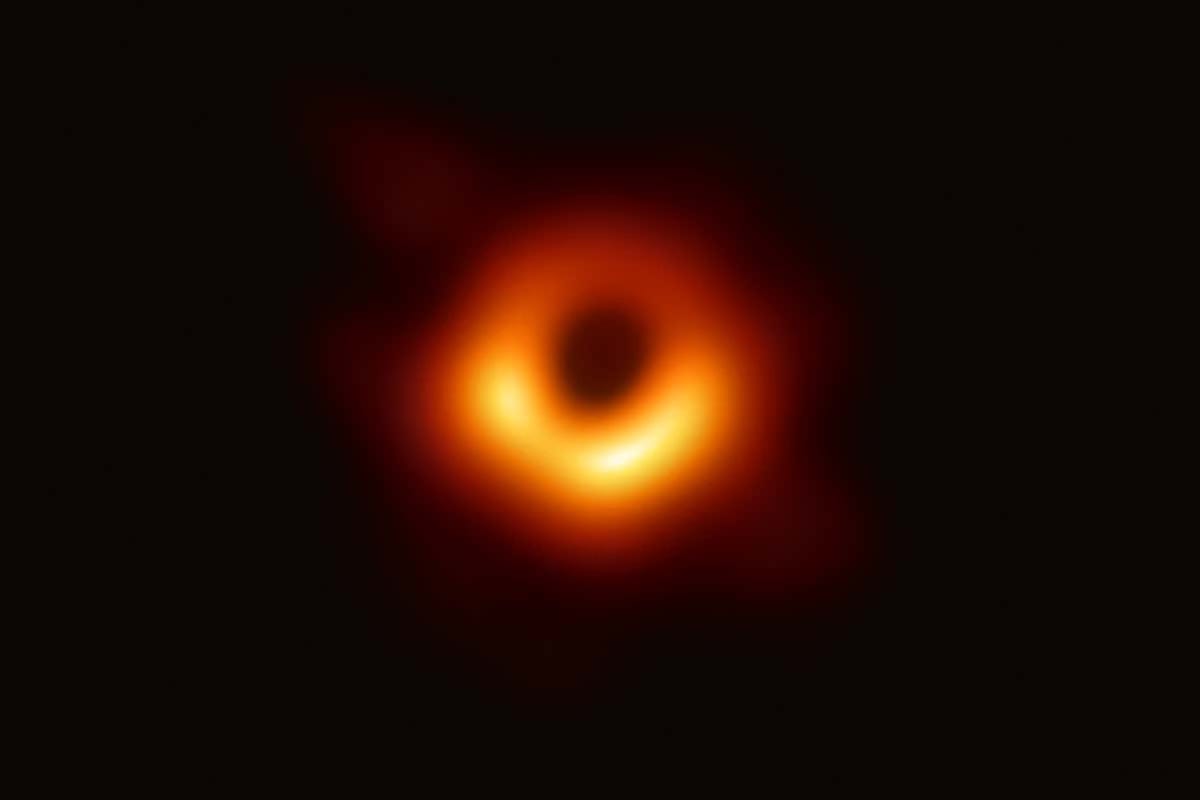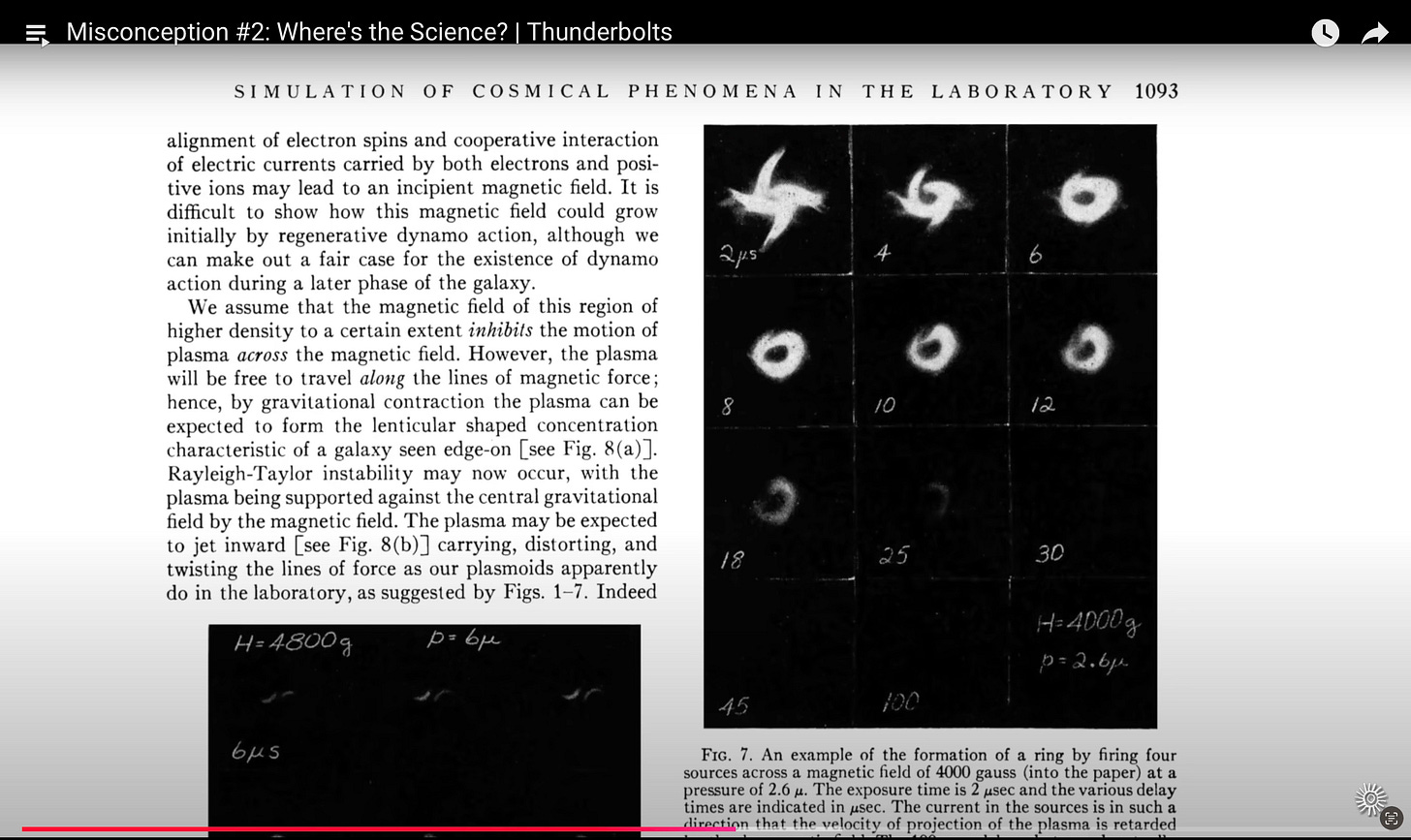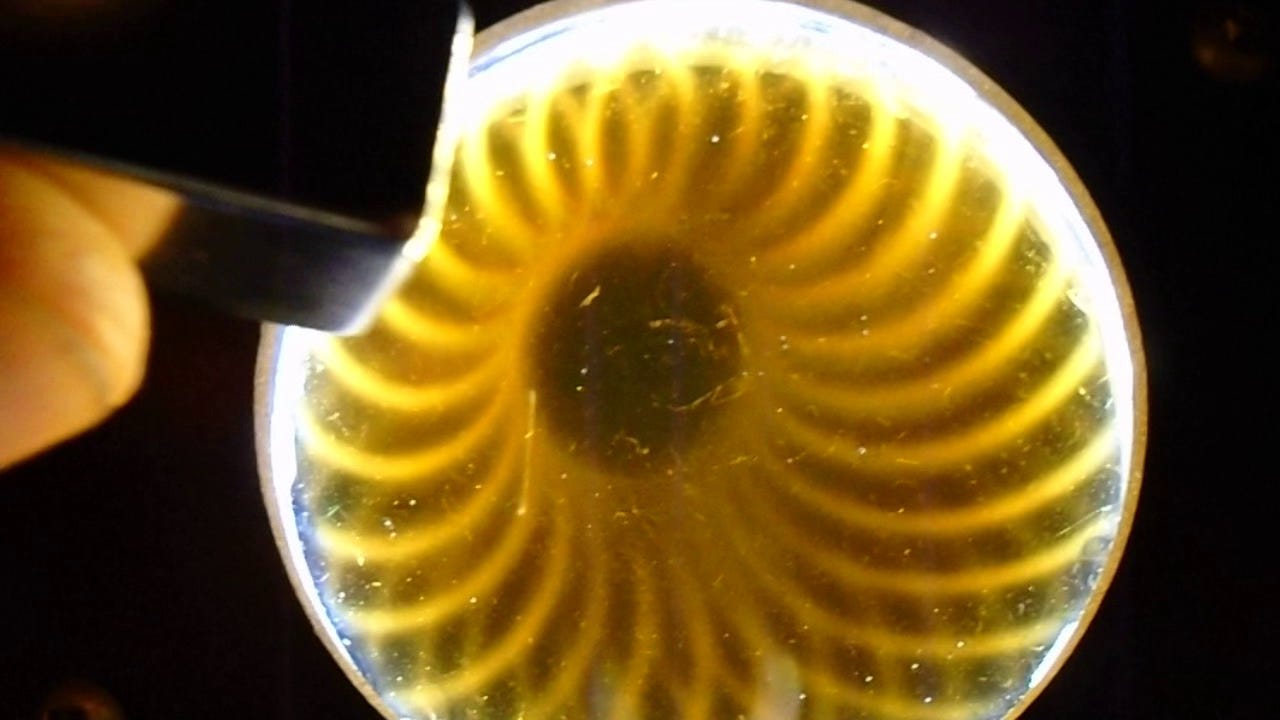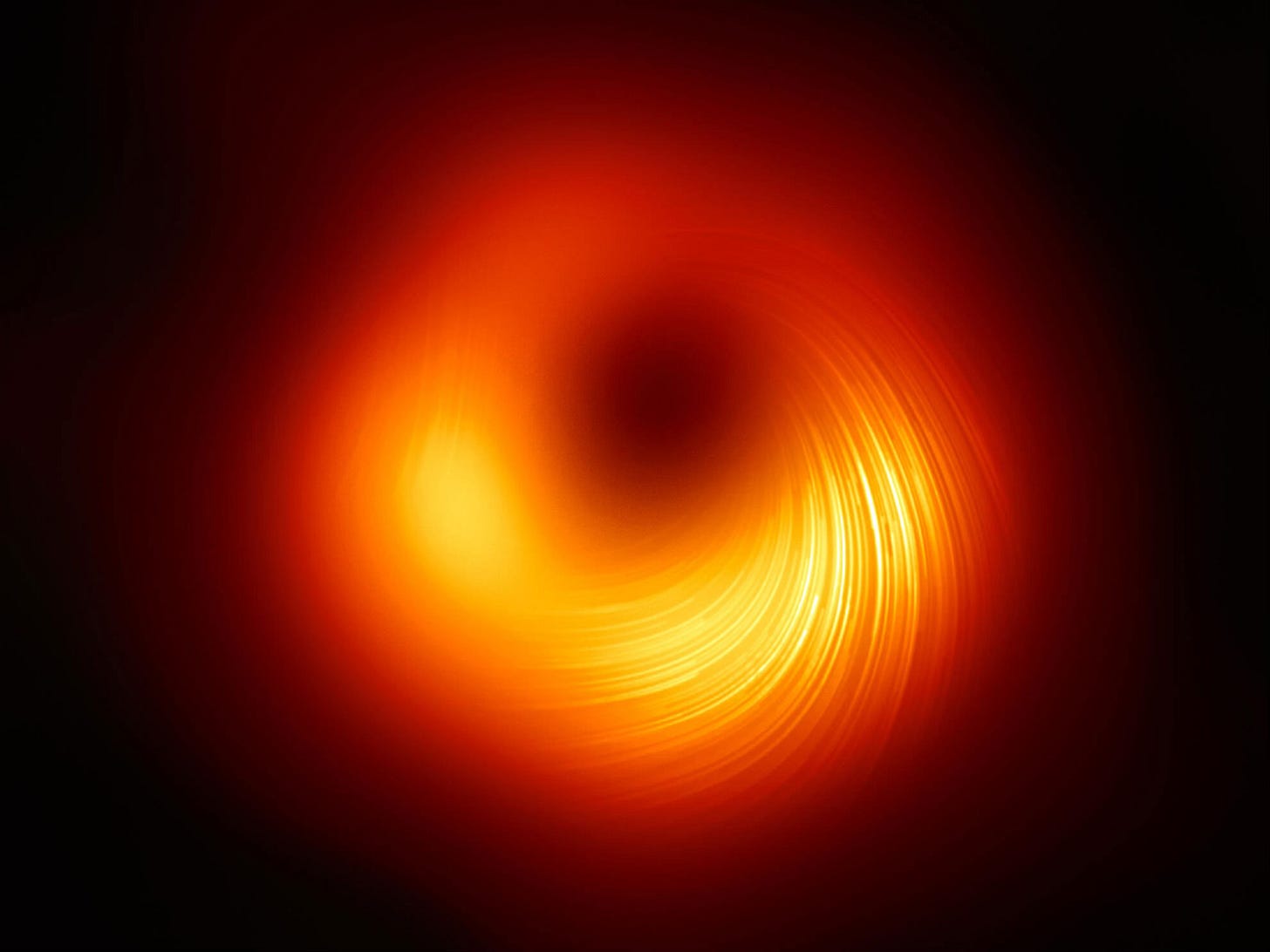Welcome to Barstool Bits, a weekly short column meant to supplement the long-form essays that appear only once or twice a month from analogy magazine proper. You can opt out of Barstool Bits by clicking on Unsubscribe at the bottom of your email and toggling off this series. If, on the other hand, you’d like to read past Bits, click here.
Some years ago, probably sometime in 2018, I stumbled across the Electric Universe theory and was deeply intrigued for a host of reasons: for one, it pushed back against the most extravagant claims of Relativity theory, but probably most compelling for me was that the approach promoted an electromagnetic reading of how the universe operates instead of a mechanical reading. The machine metaphor is tired by now, and, as I see it, we need a new paradigm if we are going to take a proper next step in cosmological science. I got in touch with the lead scientist promoting and developing the theory, Wal Thornhill, and in 2020, we published an astounding article on the subject, which you can find here.
I should warn readers that the Electric Universe theory is deemed “fringe pseudoscience” by mainstream cosmologists and astrophysicists. There are good reasons for this, the most obvious being that a century of physics would wind up in the trash and a lot of reputations would fade and be destroyed, not the least of which would be Einstein himself.
There are other good reasons to be sceptical of the Electric Universe model, namely owing to its origins with Emmanuel Velikovsky, who shook up the world in the 1950s, through the 60s, and into the early 1970s with his claims that the solar system was not as stable as we’d thought and that humanity had witnessed deeply traumatising celestial events that were recorded as mythology and forgotten as our ancestors sank into collective amnesia. His claims included ideas like (a) our original sun was Saturn, and (b) Venus is a relatively new planet ejected from Jupiter. When Venus came into being, it flew by Earth at a close enough distance to cause all manner of horrifying upheaval, displacing Mars and precipitating immense electrical phenomena that carved out canyons and other geological structures that have been attributed to slow erosive forces.
On the surface, stated baldly like that, one can understand why this avenue of thought has been relegated to the crackpot bin. But if one suspends disbelief and hears out the argument, it’s not nearly as nuts as it sounds on a first, superficial pass, largely because what the Electric Universe offers that present day cosmology and astrophysics does not is laboratory experiments that illustrate the main concepts in play.
Now, I’m not saying Velikovsky was right about everything; what I’m saying is his ideas are visionary, inspired, and inspiring enough to have set the stage for a whole new paradigm. A number of the things he proposed have proven false, sure, but some of his ideas have proven productive. One of the biggest objections to his work was that he proposed (in his famous book Worlds in Collision) that some of the most outlandish tales in the Bible could be verified and explained by these equally outlandish cosmic phenomena that had corollaries in the histories and mythologies of cultures across the globe.
Those familiar with the Velikovsky controversy also recall how poorly the scientific community reacted. The behaviour displayed by scientists was downright nasty and unprofessional, to put it mildly. To give one example of this behaviour, a group of scientists started a campaign to pressure his publisher (Macmillan) to quit printing and pull the book from the market. Despite Worlds in Collision being a best seller, Macmillan capitulated because of threats that universities would go elsewhere for their science textbooks. This was Macmillan’s bread and butter, so they broke the contract.
The real fear was that Velikovsky’s book was paving the way back to creationism, the big bogeyman of modern science. The campaign against Velikovsky included more than threats against his publisher, but I’m not going to get into the details here. I direct those curious to learn more to read The Pseudoscience Wars by Michael D. Gordin. Indeed, the campaign against Velikovsky was so unhinged that it eventually prompted Carl Sagan to admit as follows:
“The worst aspect of the Velikovsky Affair was not that many of his ideas are in gross contradiction to the facts. Rather, the worst aspect is that some scientists attempted to suppress Velikovsky's ideas.”
“There are many hypotheses in science which are wrong. That's perfectly alright: it’s the aperture to finding out what's right,” he further explained, before concluding, “The suppression of uncomfortable ideas may be common in religion or in politics, but it is not the path to knowledge, and there’s no place for it in the endeavor of science.”
See Real Clear Science “Science Should Not Suppress Ideas, No Matter How Crazy”
I provide this background information so those new to the subject have a fair introduction and understand that they ought to proceed carefully. There’s probably a lot wrong with Electric Universe theory, but there’s quite obviously a lot wrong with Relativity. As I said above, at least proponents of the Electric Universe and Plasma Cosmology can refer to lab experiments, where Relativity can, too often, only refer to math. Moreover, Electric Universe theory has come a very long way since Velikovsky and I don’t think the claims made in Worlds in Collision have much bearing anymore on this developing area of scientific speculation.
Now to my actual subject: the image of a black hole that hit the news with a bang in 2019.
As I mentioned a couple of weeks back, once TheScience™ has produced an image of something, one can no longer claim that no one has ever seen it. Last time, I was looking at electron microscopy; this time, we’re looking at the macro scale through the Event Horizon Telescope (EHT), which is as much a telescope as an electron microscope is a microscope: neither provide direct observations in the sense one expects when hearing about these “scopes.” In the present case, we’re talking about a three-year-long observation, resulting in a data set assembled into images, using an algorithm to fill in gaps. In other words, the output is a composite image built up by a biased platform overtly seeking to confirm the phenomenon in question. In other words, the whole system is designed to “see” it through computer modelling. Seeking confirmations is not science. Science is supposed to seek falsifications of its own hypotheses, but this critical aspect of science has been lost over the past century or so.
Those who recall the hype will remember typical headlines like this April 10, 2019 one from New Scientist: “First ever real image of a black hole.” The word, “real” is a bent truth, if not an outright lie. This article from Universe Magazine explains that the image isn’t a snapshot as lay readers have been led to believe, that it is, in fact, a composite, part fabricated, part incomplete image that may very well be misleading. I’m sure the hype, however, netted the desired grants and funding those involved needed to keep running their programs. It’s not exactly a hoax, but it’s not honest science either. My point is that the public now believes that black holes have been confirmed by direct observation and that they therefore truly exist the same way it believes coronaviruses exist. Some scientists put together an image, enhanced it, pointed at it and called it “virus” or “black hole,” and there you go: seeing is believing. Anyone can now google “real image of a black hole” and find it. It’s irrefutable, see?

I direct readers to the Thunderbolts Project channel on Youtube. This is the Electric Universe video information channel. They’ve recently produced an excellent “Misconception” series of videos narrated by David Drew. Number 2 in the series focuses on our subject today and is about 15 minutes long. Drew suggests that the image in question is likely a plasmoid, and shares the image below. I remind readers that the ferrocell images of magnetism also reproduce a “black hole.” Simply being aware of these phenomena gives pause, since they can explain the image (composite and half-baked as it is) without resorting to black holes. David Drew reminds us that even Einstein believed that black holes were mathematical aberrations without grounding in reality.
To add to the ridiculousness of blackholology, the European Southern Observatory shared the following, further enhanced image.
The accompanying explanation reads:
“A view of the M87 supermassive black hole in polarised light”
“This image shows the polarised view of the black hole in M87. The lines mark the orientation of polarisation, which is related to the magnetic field around the shadow of the black hole.”
From the European Southern Observatory, here.
As the ferrocell image above demonstrates, the “shadow of the black hole” isn’t simply “related to the magnetic field”—it is an essential property of magnetic fields and has nothing to do with gravitational singularity as defined by the Relativity paradigm.
As I keep pointing out, the sciences are in a sorry state across the board. We’ve entered a pseudoscientific age in which the most absurd hypotheses are being promulgated as fact and verified via confirmation bias. Science culture has entirely lost the thread and slipped into scientistic superstition characterised by fictional entities and tall tales. The whole apparatus is being fuelled by over-specialisation, which functions as a blinder along with financial incentives to futz the findings. In addition, we have a whole culture in thrall to “the science” in an unquestioning manner. Nothing could be more unscientific than present-day science.
My suggestion, as always, is to reintroduce philosophy, metaphysics, and an understanding of analogy and its role in scientific thought. How to achieve such a thing in the present hyper-materialist phase of our civilisation is hard to imagine. Too much money is on the line and too many reputations are fully invested in tired paradigms strutting about as “the science.” Worse, it’s become politicised to the point no one who wants to be taken seriously can challenge the status quo. The West is now provincial and puritanical, i.e. small-minded and afraid to question itself. How long this state of affairs can continue is unclear. What is clear, however, is that the human soul knows better. The inner world cries out in the wilderness and eventually breaks from its bondage. We can already see the glimmering seeds of this future scientific revolution as the heroes of the next chapter of the Science story fearlessly speak out and lay the groundwork for new paradigms.
Asa Boxer’s poetry has garnered several prizes and is included in various anthologies around the world. His books are The Mechanical Bird (Signal, 2007), Skullduggery (Signal, 2011), Friar Biard’s Primer to the New World (Frog Hollow Press, 2013), Etymologies(Anstruther Press, 2016), Field Notes from the Undead (Interludes Press, 2018) and The Narrow Cabinet: A Zombie Chronicle (Guernica, 2022). Boxer is also the founder and editor of analogy magazine.








Dear Asa,
As a former astrophysicist myself, I enjoyed this piece. I haven't dabbled with 'Electric Universe Theory', but there are dozens of similar competing interpretations in physics that I am familiar with (e.g. Bohm's version of quantum mechanics). The story is often the same as you outline here - competing theories are treated as blasphemies! 🙄
However, I want to engage with your piece here not as an ex-astrophysicist, but with my philosopher of science cap pulled on tightly...
Firstly:
"The word, 'real' is a bent truth, if not an outright lie."
Ha, well if we were permitted to have the important discussions about epistemology and ontology, we could come at this differently, of course, but it is the case that science reporters (I place marginally more blame here than the research community in this instance) treat as 'real' things that are fabricated in the most blatant ways.
Yet fabricated doesn't necessarily mean 'not real' - we fabricate the view through our eyes, but we still tend to think of what we see as real... There are interesting discussions here that don't happen, including the philosophical dimensions of 'seeing' (Kendall Walton, who's been very supportive of my philosophy, suggests we 'see through photographs', which is a much more interesting claim than it first sounds!).
Am I saying this is all the fault of science reporters? No. The research community also has major issues. But the promulgation of material that serves the research budget agenda is fostered greatly by the way that reporting is approached. This opens a huge side-line, of course...
"We’ve entered a pseudoscientific age in which the most absurd hypotheses are being promulgated as fact and verified via confirmation bias."
I resist the deployment of 'pseudoscientific' in this and many other cases: for something to be rendered as 'pseudoscientific' there must be a clear practice of 'science' against which you are positioning yourself. But what is it...? Paul Feyerabend makes a strong case that this part of the dogma has been wildly broken pretty much from the start, and while I don't want to go into the details here, I don't think we'll get anywhere presuming there is 'science' and 'pseudoscience' - this is arguably just doctrine and heresy rebranded*.
"Science is supposed to seek falsifications of its own hypotheses, but this critical aspect of science has been lost over the past century or so."
Popper's The Logic of Scientific Discovery was published in 1934. So this idea of falsification as the sine qua non of science is less than a century old. So talking about a critical aspect of science being lost over the past century must be some kind of mistake, as this whole approach is only a century old!
This is another of those cases where my point about 'scientist' being coined in 1834 (a century before Popper's key contribution to philosophy of science) is crucial. There are two entire ages of natural philosophy in between those two centuries, and back-projecting 'science' in its contemporary meaning to before about 1659 (Boyle's vacuum experiments) entails some gerrymandering I'm resistant to, as we've discussed before...
"Nothing could be more unscientific than present-day science."
What is this 'science' you speak of that you can judge this the 'most unscientific' age...? That run from 1834 to 1934 is hardly more impressive, nor would I leap on either leg of 1659-1834 as being much better, and before this is a couple of millennia of natural philosophy that, frankly, looks extremely 'unscientific' to contemporary eyes!
While I agree with you that the contemporary sciences have tied themselves up into a philosophical knot, how we raise our complaints about what researchers and promulgators are doing might be crucial. That statement of yours is tough to defend without a fully developed philosophy of 'the scientific' that is widely accepted - and no such thing currently exists...
'The scientific method', as I believe we've discussed before, is mostly a post hoc justification for what is supposed to happen. It is certainly not fully laid out in Bacon's Novum Organum (1620), which merely gestures at a research programme - one that I think defensible to connect to contemporary research, even though it's very amusing that many of Bacon's accusations about the natural philosophers of his time apply so well to the 'scientists' in our own time! 😂
Ah, but there's the rub! For the more one delves into the history of the sciences and natural philosophy the more apparent it becomes that "nothing could be more unscientific than any era of science judged by any other era of science's standards (even, sometimes, its own!)".
I hope this pushback is intriguing to you... I very much enjoyed this piece, although evidently it sets off a lot of fires that aboard my philosophy of science fire truck I have attempted to sketch (rather than extinguish).
Stay wonderful,
Chris.
* Footnote: I developed a different way of using the term 'pseudoscience' in 2021 that I still feel is very productive:
https://onlyagame.typepad.com/only_a_game/2021/01/what-is-pseudoscience.html
...I then applied it to community masking, which was what inspired me to take this path:
https://onlyagame.typepad.com/only_a_game/2021/02/a-case-study-in-pseudoscience.html
That's a lot of extra reading, but I feel it's pertinent so thought I'd include it!
I enjoyed this and the post just before it. I recently read an essay by Jeffrey A. Tucker quoting Hayek's 1974 Nobel speech. May I? I am sure you know it well. "In the sciences of man, what looks superficially like the most scientific procedure is often the most unscientific." He was wary of use of such procedure to shape society "entirely to our liking." He added that "the confidence in the unlimited power of science is only too often based on a false belief that the scientific method consists in the application of a ready-made technique, . . . as if one needed only to follow some cooking recipes to solve all social problems."